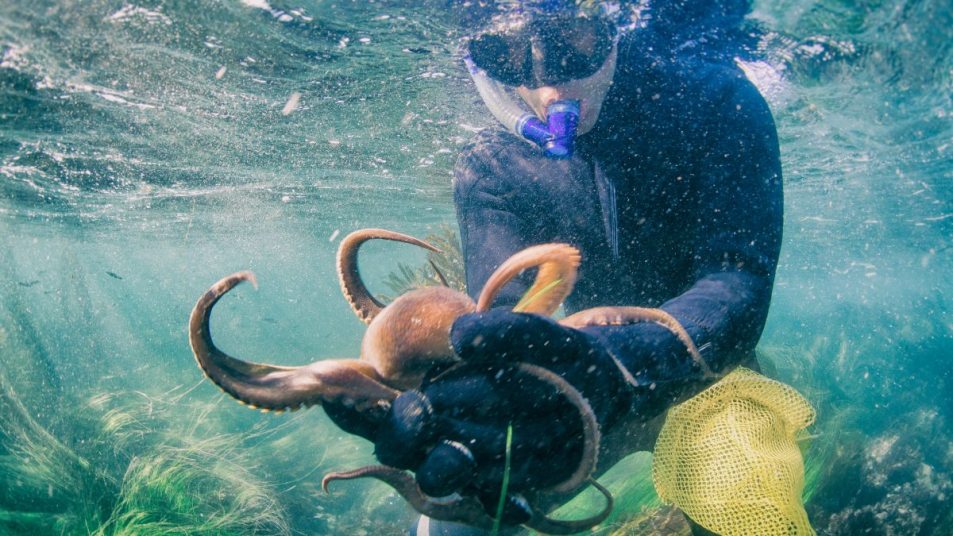Jumping Genes? Human and Octopus Brains Have More in Common Than We Thought
These genes may play a role in learning and memory.

Primates may be our closest living relatives, but to learn more about our brains, some scientists are looking to creatures of the water. A recent study found that the octopus brain and the human brain share the same “jumping genes.”
We already know that the octopus is an incredibly intelligent creature. (If you’ve watched My Octopus Teacher on Netflix, you may remember the titular octopus forming a unique “shell shield” all around her body to hide from a shark.)
Despite our shared intelligence, though, octopuses and humans are genetically distant, meaning the two evolved independently of one another. What, then, could one species’ brain tell us about the other?
Understanding Jumping Genes
Published in the journal BMC Biology and conducted by over 20 researchers from all over the world, this study explored jumping genes in the octopus brain. Jumping genes, which are technically called transposons, are sequences of DNA that can move to different locations in a genome. (A genome is the complete set of DNA in an organism.)
Transposons move to different spots in the genome using either a copy-and-paste or cut-and-paste technique. In other words, they either “shuffle” themselves or duplicate themselves.
Now, most transposons don’t have visible effects, and over the course of evolution, many of them have lost their ability to move. As a result, transposons seem a bit useless and no longer important.
However, the researchers knew that jumping genes tell a story. By studying them, the team could learn more about octopus and human brains.
A Link Between Octopuses and Humans
The jumping genes that the researchers focused on are members of the LINE (Long Interspersed Nuclear Elements) family. LINE family transposons are present in human brains, and unlike many other jumping genes, they are still active. Recently, scientists have started to believe that LINE transposons are important for learning and memory, because they are very active in the hippocampus (the learning and memory center of our brains).
In studying octopuses, the researchers made an impressive discovery: LINE genes are also present in octopus brains, and they are active in the learning and memory centers.
“I literally jumped on the chair when, under the microscope, I saw a very strong signal of activity of this element in the vertical lobe — the structure of the [octopus] brain which is the seat of learning and cognitive abilities — just like the hippocampus in humans,” Giovanna Ponte, researcher at Stazione Zoologica Anton Dohrn in Naples, Italy said in a press release.
“The discovery … is very significant because it adds support to the idea that these elements have a specific function that goes beyond copy-and-paste,” added Remo Sanges, director of the Computational Genomics laboratory at SISSA, an international research institute in Trieste, Italy.
Another researcher, Giuseppe Petrosino, pointed out that this is a perfect example of convergent evolution. As he explains, convergent evolution is “a phenomenon for which, in two genetically distant species, the same molecular process develops independently in response to similar needs.”
In effect, human and octopus brains evolved to have similar learning and memory capabilities in order to survive. Just think of the amazing things octopuses are capable of: In My Octopus Teacher, Craig Foster witnessed the octopus learn (after several dangerous encounters) how to cling to a shark’s back to evade it. Something even more remarkable: She came to know Foster as a friend, and would even hold onto him for comfort.
Perhaps these similarities in intelligence, memory, and learning are the reason that Foster became so attached to his “octopus teacher” — he saw himself in an animal from the ocean.












